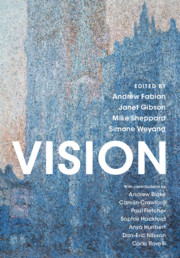Refine search
Actions for selected content:
3312 results in Artificial Intelligence and Natural Language Processing
Efficient bilingual lexicon extraction from comparable corpora based on formal concepts analysis
-
- Journal:
- Natural Language Engineering / Volume 29 / Issue 1 / January 2023
- Published online by Cambridge University Press:
- 04 October 2021, pp. 138-161
-
- Article
- Export citation
Evaluation of taxonomic and neural embedding methods for calculating semantic similarity
-
- Journal:
- Natural Language Engineering / Volume 28 / Issue 6 / November 2022
- Published online by Cambridge University Press:
- 28 September 2021, pp. 733-761
-
- Article
- Export citation

Vision
-
- Published online:
- 17 September 2021
- Print publication:
- 26 August 2021
Foreword
-
- Book:
- Similar Languages, Varieties, and Dialects
- Published online:
- 12 August 2021
- Print publication:
- 02 September 2021, pp xiii-xv
-
- Chapter
- Export citation
13 - Arabic Dialect Processing
-
- Book:
- Similar Languages, Varieties, and Dialects
- Published online:
- 12 August 2021
- Print publication:
- 02 September 2021, pp 279-303
-
- Chapter
- Export citation
9 - Dialect and Similar Language Identification
-
- Book:
- Similar Languages, Varieties, and Dialects
- Published online:
- 12 August 2021
- Print publication:
- 02 September 2021, pp 187-203
-
- Chapter
- Export citation
4 - Mutual Intelligibility
-
- Book:
- Similar Languages, Varieties, and Dialects
- Published online:
- 12 August 2021
- Print publication:
- 02 September 2021, pp 51-95
-
- Chapter
- Export citation
5 - Dialectology for Computational Linguists
-
- Book:
- Similar Languages, Varieties, and Dialects
- Published online:
- 12 August 2021
- Print publication:
- 02 September 2021, pp 96-118
-
- Chapter
- Export citation
Contributors
-
- Book:
- Similar Languages, Varieties, and Dialects
- Published online:
- 12 August 2021
- Print publication:
- 02 September 2021, pp xi-xii
-
- Chapter
- Export citation
7 - Adaptation of Morphosyntactic Taggers
-
- Book:
- Similar Languages, Varieties, and Dialects
- Published online:
- 12 August 2021
- Print publication:
- 02 September 2021, pp 138-166
-
- Chapter
- Export citation
Introduction
-
- Book:
- Similar Languages, Varieties, and Dialects
- Published online:
- 12 August 2021
- Print publication:
- 02 September 2021, pp xvi-xviii
-
- Chapter
- Export citation
10 - Dialect Variation on Social Media
-
- Book:
- Similar Languages, Varieties, and Dialects
- Published online:
- 12 August 2021
- Print publication:
- 02 September 2021, pp 204-218
-
- Chapter
- Export citation
Part III - Applications and Language Specific Issues
-
- Book:
- Similar Languages, Varieties, and Dialects
- Published online:
- 12 August 2021
- Print publication:
- 02 September 2021, pp 185-186
-
- Chapter
- Export citation
1 - Language Variation
-
- Book:
- Similar Languages, Varieties, and Dialects
- Published online:
- 12 August 2021
- Print publication:
- 02 September 2021, pp 3-16
-
- Chapter
- Export citation
3 - Similar Languages, Varieties, and Dialects: Status and Variation
-
- Book:
- Similar Languages, Varieties, and Dialects
- Published online:
- 12 August 2021
- Print publication:
- 02 September 2021, pp 27-50
-
- Chapter
- Export citation
11 - Machine Translation between Similar Languages
-
- Book:
- Similar Languages, Varieties, and Dialects
- Published online:
- 12 August 2021
- Print publication:
- 02 September 2021, pp 219-253
-
- Chapter
- Export citation
2 - Phonetic Variation in Dialects
-
- Book:
- Similar Languages, Varieties, and Dialects
- Published online:
- 12 August 2021
- Print publication:
- 02 September 2021, pp 17-26
-
- Chapter
- Export citation
14 - Computational Processing of Varieties of Chinese: Comparable Corpus-Driven Approaches to Light Verb Variation
-
- Book:
- Similar Languages, Varieties, and Dialects
- Published online:
- 12 August 2021
- Print publication:
- 02 September 2021, pp 304-326
-
- Chapter
- Export citation
Frontmatter
-
- Book:
- Similar Languages, Varieties, and Dialects
- Published online:
- 12 August 2021
- Print publication:
- 02 September 2021, pp i-vi
-
- Chapter
- Export citation
6 - Data Collection and Representation for Similar Languages, Varieties and Dialects
-
- Book:
- Similar Languages, Varieties, and Dialects
- Published online:
- 12 August 2021
- Print publication:
- 02 September 2021, pp 121-137
-
- Chapter
- Export citation
